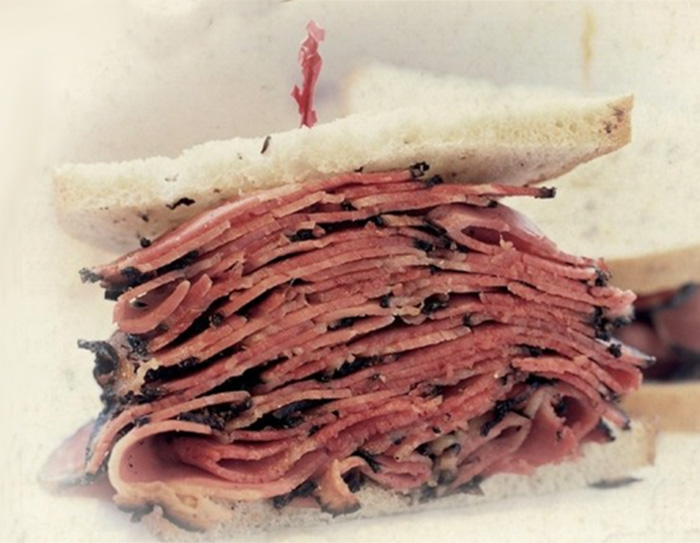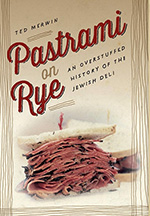Tasting the American Dream

New book by Ted Merwin serves up the cultural history of the Jewish Deli
by MaryAlice Bitts-Jackson
The sandwich-maker slices the meat and piles it high atop a hunk of seeded bread. There’s an “intricate, elegant choreography” to it, writes Ted Merwin, associate professor of Judaic studies and director of the Milton B. Asbell Center for Jewish Life, and it peaks when the artist sails his creation across the countertop “like a pitcher delivering a fastball to home plate.”
That's the mouth-watering kickoff to Merwin’s Pastrami on Rye: An Overstuffed History of the Jewish Deli. Published by NYU Press, the book dishes up the deli’s role in Jewish-American life and pop culture, from Broadway to When Harry Met Sally to Saturday Night Live, and it’s earning national and international praise—including recent pieces in The New York Times and The New York Times Sunday Book Review. It also was recently awarded the 2015 National Jewish Council Book award, Education and Jewish Identity category.
Dishing up identity
As Merwin describes it, Eastern European-style delis popped up in Manhattan’s Lower East Side at the turn of the 20th century, dishing up Old World flavor in a space where Jewish immigrants could relax, network, conduct business and stump at a time when they were not yet fully accepted by mainstream American society.
The delis were places to discover and express what it means to be Jewish in America, and in the '20s and '30s in particular, they became powerful expressions of the American Dream. There, the children of Jewish immigrants could celebrate American abundance by consuming sandwiches stuffed with more meat than their parents could afford back in Europe. They also could dream big while rubbing elbows with the stars during an after-show nosh (memorably, Al Jolson invited audiences to join him for a post-show sandwich, and gangster Arnold Rothstein was such a fixture at Lindy’s that many assumed he owned the joint).
The stardust faded in the postwar era, as Americans flooded the suburbs and many delis Americanized their menus (one in Merwin’s hometown offered a turkey-sandwich takeout for a Jewish-flavored Thanksgiving). Jewish-Americans, meanwhile, began to seek out more exotic-seeming food, like Chinese, and healthier fare.
‘Like a plague of locusts …’

That rise and fall makes for a delicious culinary tour, packed with flavorful anecdotes from Merwin, the author of In Their Own Image: New York Jews in Jazz Age Popular Culture, who writes about Jewish theater, dance and food for The Jewish Week and has delivered more than 100 public lectures on Jewish culture. It’s exhaustively researched, but it’s also a personal gastronomical romance, tapping a love affair with the Jewish deli that began decades ago, when Merwin was growing up in Great Neck, New York.
As Merwin relates, his family didn’t go to temple, and they didn’t send their son to Hebrew school. But they did send him out to the local deli every Sunday to pick up a meal for the extended family (a pound each of roast beef and turkey, with seeded rye, baked beans and gravy). There, Merwin experienced a larger Jewish-American community, one bonded through food.
Once home, the food was quickly devoured by Merwin and his extended family, he writes, “as if a Biblical plague of locusts had devoured everything in sight. I was always left wanting more.”
Learn more
- “Pastrami on Rye by Ted Merwin” (The New York Times)
- “Books on New York City Celebrate Its Sports and New York Delis” (The New York Times)
- “Tasty Bits From the History of the Jewish Deli” (New York Post)
- “The History of the Jewish Deli—Across America and in Philly” (WHYY Radio Times)
- Ted Merwin: Focus on Faculty
- Milton B. Asbell Center for Jewish Life
- “The Unrevised Life” by Ted Merwin (Dickinson Magazine)
- “Terror on Rye”
- Latest News
Published October 13, 2015